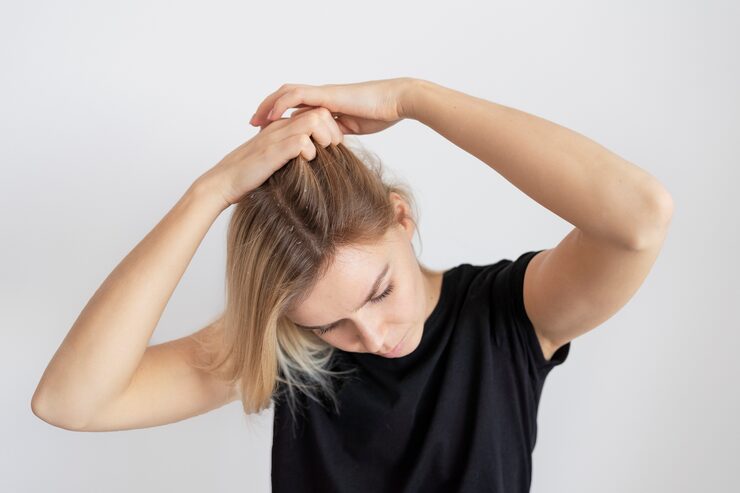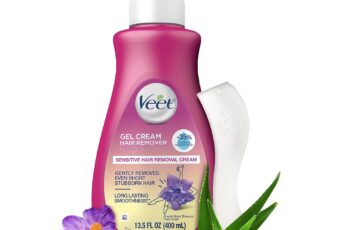Let’s be real — lice in the hair? No one wants to talk about it, but when it happens, it takes over everything. I’ve been there. The itching, the stress, the non-stop checking — it can feel like a full-time job. And the worst part? It makes you feel like you’re doing something wrong, even though lice can show up in the cleanest hair. That’s why finding a treatment for lice in the hair that actually works matters more than anything else.
You might be sitting here wondering where they came from, how they got in your hair, and what to do next. It’s easy to panic, but don’t. This isn’t about shaving your head or reaching for harsh chemicals. You’ve got better options. What you need is a calm, step-by-step way to deal with it — something simple, gentle, and effective.
So, that’s exactly what I’m going to walk you through. I’ll help you spot the signs early, show you what really works (and what doesn’t), and go over both store-bought and natural treatments. I’ll even share a few things I wish I knew the first time I had to deal with this mess.
Grab a comb, breathe deep, and let’s sort this out together — because getting rid of lice doesn’t have to feel like a battle.
Table of Contents
Key Takeaways
- Lice aren’t a reflection of your hygiene. They just happen.
- The best treatment for lice in the hair starts with a lice comb and steady routine.
- Chemical and natural options both work—you choose what feels best.
- Cleaning smart (not obsessively) makes a difference.
- Keep checking and repeat treatments to stop reinfestation.
What Are Lice, Really?
Lice are tiny insects that live on the scalp and feed on blood. That alone is enough to make most people uncomfortable, and I get that. But knowing exactly what they are helps you stop feeling ashamed and start dealing with the problem.
They’re small—barely bigger than a sesame seed. They lay eggs, called nits, that stick tightly to the base of your hair near the scalp. You won’t find them flying around because they don’t fly or jump. They crawl. Slowly. And they spread through close contact, like heads touching or sharing things like brushes and hats.
And let me just say this again, louder this time: it has nothing to do with being dirty. Lice don’t discriminate. Clean hair, messy hair, long hair, short hair—none of it matters. What matters is how quickly you catch them and how calmly you deal with them.
What to Look Out For
You probably already know that the number one symptom is itching. But not everyone itches. Some people don’t react to lice bites at all.
Here are a few things to look out for:
- Itching, especially around the nape of your neck and behind your ears.
- A tickling feeling, like something is crawling.
- Tiny white or yellowish eggs stuck to your hair close to the scalp.
- Red bumps or scratch marks on your scalp.
And yes—if you see something moving, that’s probably a live louse.
It’s easy to mistake dandruff or hair product buildup for lice eggs. Here’s how you know: dandruff flakes off easily. Lice eggs don’t. They’re stuck tight. If you try to flick it and it won’t move? That’s likely a nit.
Also Read: Hair Care 101: Your Ultimate Guide to Products and Daily Routines
The Best Treatment for Lice in the Hair (That Doesn’t Feel Like a Nightmare)
Okay. You’ve confirmed it’s lice. Now what?
There’s a lot out there. Too much, honestly. You’ll find shelves of lice kits at the store, home remedies on every corner of the internet, and way too many people telling you what worked for their cousin’s neighbor’s dog.
Here’s what I’ve found works—without making your head spin.
1. Start With a Lice Comb
Seriously, don’t skip this step. It’s the foundation of everything else. Even if you do nothing else, a good lice comb and some patience will take you far.
Here’s what you do:
- Wash the hair and coat it in conditioner. This helps loosen everything up and makes combing easier.
- Use a fine-toothed metal lice comb, not a regular brush.
- Work in small sections and go slowly. Wipe the comb after each pass.
Do this every day for a week, then every few days for another week or two.
This part takes time, but you’ll actually see what you’re removing—and that alone gives you peace of mind.
2. Pick the Right Product (If You Want One)
You don’t need to use a store-bought treatment. But if you want that extra step, there are two types to choose from:
- Chemical-based treatments: These usually contain ingredients like permethrin or pyrethrin. They kill live lice but may not kill all eggs.
- Silicone/oil-based treatments: These smother the lice. Products with dimethicone are becoming more popular because they’re gentler and don’t rely on pesticides.
Whichever one you choose, read the instructions. Follow them exactly. Most treatments will need to be repeated in 7 to 10 days to catch newly hatched lice.
3. Wash the Right Things
This is the part where people often go overboard. You do not need to disinfect your whole house. Lice die within 24–48 hours without a scalp to live on.
Here’s what’s worth doing:
- Wash pillowcases, sheets, scarves, hats, and hairbrushes in hot water.
- Anything you can’t wash? Seal it in a bag for two weeks.
- Soak combs and clips in boiling water for a few minutes.
Skip the bleach. Skip the sprays. Stick to what matters.

Natural Remedies That Take More Time But Feel Gentler
If you’re someone who prefers a more natural route, you’ve got options. These methods may take more time and more effort, but they’re much gentler on your skin.
Coconut Oil
This is a favorite. Thick, greasy, and great at slowing lice down.
- Coat the hair and scalp in coconut oil.
- Cover with a shower cap and leave it for a few hours (or overnight).
- Comb through while the hair is still oily.
- Wash out and repeat every few days.
It doesn’t kill the eggs, but it makes it easier to get rid of everything when you comb.
Tea Tree Oil
Lice don’t seem to like the smell. But use it carefully—it’s strong.
- Mix a few drops with a carrier oil like olive or coconut oil.
- Apply to the scalp and leave it for 30–60 minutes.
- Comb through, then wash.
Don’t apply tea tree oil directly to the scalp. Always dilute it.
Vinegar Rinse
This one won’t kill lice, but it helps loosen the eggs.
- Mix equal parts vinegar and water.
- Pour over the hair and let it sit for 10–15 minutes.
- Then comb, comb, and comb some more.
You might not notice immediate results, but it makes the next round of combing easier.
Mayonnaise or Olive Oil Overnight
These old-school tricks are about smothering the lice.
- Slather it on thick.
- Cover with a shower cap.
- Leave overnight and comb out in the morning.
Is it gross? Yeah. But it works for some people.
How to Keep Lice From Coming Back
Once you’re lice-free, let’s keep it that way.
- Don’t share brushes, combs, or hats—especially in shared spaces like schools or sleepovers.
- If you or your child has long hair, keep it tied up in crowded places.
- Add a drop or two of tea tree oil to your shampoo if you like the smell.
- Do weekly scalp checks, especially if there’s been a lice outbreak around you.
Prevention is never 100%, but little habits go a long way.
What Not to Do (Please Read This)
This part is important. When you’re desperate, it’s tempting to try anything. But some things are just not safe—or helpful.
- Don’t use harsh chemicals like bleach or rubbing alcohol. They’ll irritate your scalp and won’t help.
- Don’t shave the head unless the person wants it. It’s not necessary, and it can cause more distress.
- Don’t assume it’s gone after one treatment. Eggs can hatch after a week. If you don’t repeat treatment, you’ll be right back where you started.
When You Need Help
If you’ve done the treatments, the combing, and everything else—and you’re still dealing with lice—it’s okay to get help.
- A doctor can prescribe stronger treatment if needed.
- Some cities have professional lice removal services.
- If the scalp is red, swollen, or very irritated, get it checked.
There’s nothing wrong with asking for support when you’ve done all you can on your own.
Check Out: What’s the Best Oil for Straightening Hair?
Quick Pros and Cons Breakdown
Over-the-Counter Products
Pro: Easy to find, kills live lice
Con: Can dry out the scalp, doesn’t always kill eggs
Natural Oils
Pro: Gentle and safe
Con: Need repetition, slower results
Lice Comb
Pro: No chemicals, very effective
Con: Time-consuming, needs patience
Conclusion
If you’re in the middle of this, I want to remind you—lice are temporary. They’re frustrating, sure. But they’re not unbeatable. You don’t have to turn your life upside down. You just need to stick to the steps, stay calm, and not let the stress of it all take over your mind.
You’ve got options. You’ve got time. And now, you’ve got a plan.
Frequently Asked Questions
Can I treat lice in the hair without using store-bought products?
Yes, but you’ll need patience. Coconut oil, tea tree oil, and vinegar can help when used with consistent combing.
How many days until lice are gone?
If treated properly, lice can be gone in 1–2 weeks. But the key is repeating the treatment and combing thoroughly.
Do lice go away on their own?
No. They need treatment. Left alone, they’ll just keep reproducing.
Can I go to work or send my kid to school during treatment?
In most cases, yes—once treatment has started. But check your local school or work policy just to be sure.



